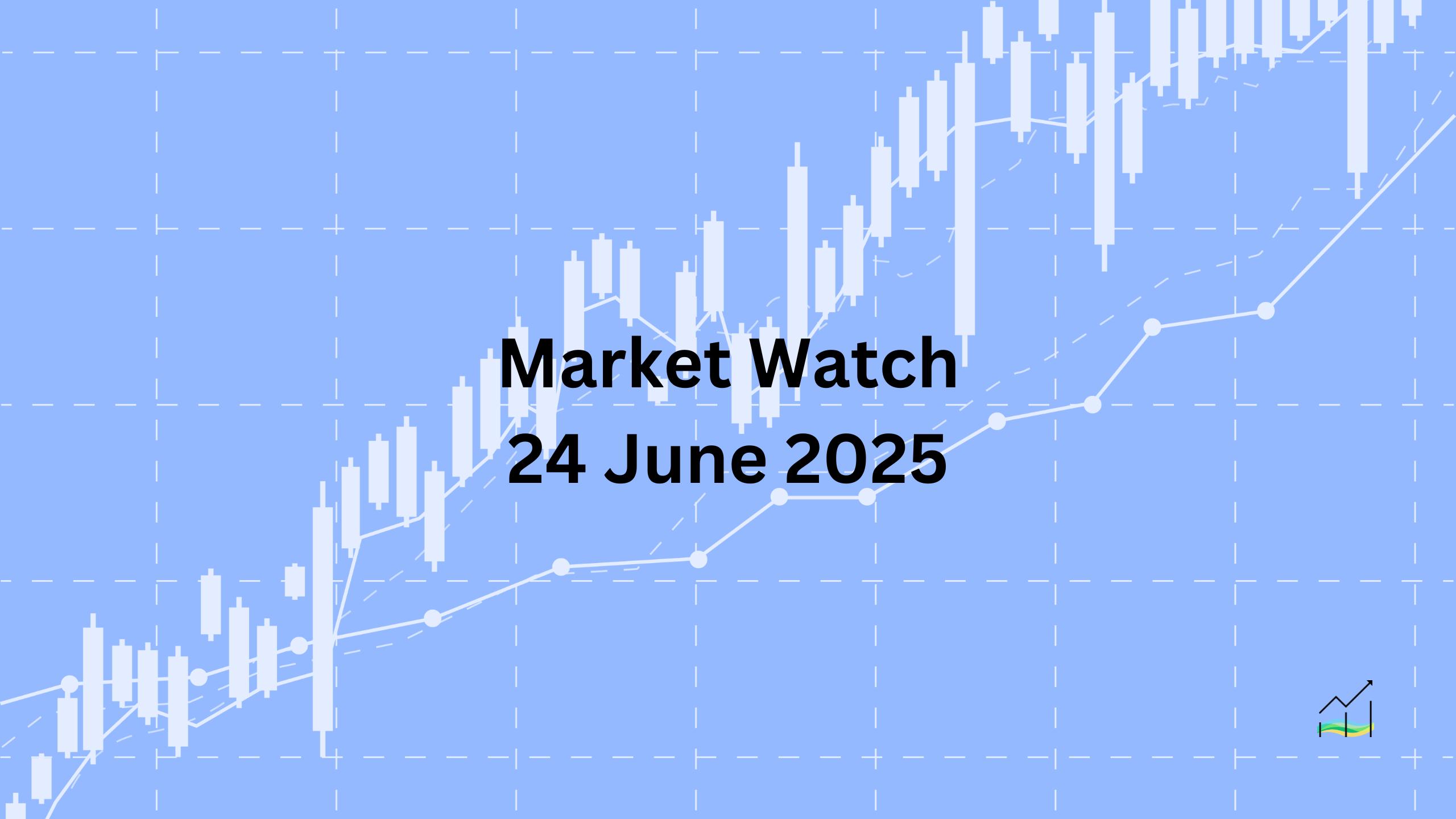24/06/2025 Market Watch

Markets Rally as War Fears Recede & Dollar Slips
Key Takeaways:
- A tentative cease-fire between the US, Iran and their proxies has eased fears of wider war.
- The US dollar has broadly weakened across G10 and EM currencies.
- Gold and oil prices have retreated sharply from recent highs.
- Global equity markets are rallying on reduced geopolitical risk.
- Market focus is shifting to Powell’s testimony and Middle East developments.
After weeks of military tension and speculation over escalation, a tentative cease-fire now appears to be holding between the US, Iran and their affiliated proxies. Whether it began with the US's pre-emptive strikes on Iranian nuclear sites or Iran’s retaliatory attacks on US bases in Qatar, the intensity of hostilities has now cooled. Israel has declared its campaign a success, though the broader conflict predates the latest confrontation, with heavy blows already dealt to Hamas and Hezbollah.
The easing of geopolitical risk has shifted sentiment sharply. Markets are unwinding their flight-to-safety positions, leading to a broad sell-off in the US dollar. The greenback is trading near monthly lows against both G10 and emerging market currencies. Commodities are also retreating, with gold falling over 1% to a two-week low near $2320 and crude oil (August WTI) dropping from recent highs near $78 to just above $66.
Global equities are surging. Most Asia Pacific markets posted gains above 1%, while Hong Kong and Taiwan saw over 2% rallies. Europe’s Stoxx 600 is up 1.3%, and US futures point to solid gains of 0.8% to 1.2%. Bond yields are moving unevenly, with European 10-year yields 3 to 6 basis points higher and German Bunds leading the move on defense-spending concerns. Meanwhile, the US 10-year yield is steady around 4.35%. Markets are now watching for any instability in the cease-fire and awaiting Chair Powell’s congressional testimony for further guidance on US monetary policy.
United States of America
Overview
The US dollar came under sharp pressure following a failed attempt to hold above 99.40 on the Dollar Index. After reaching a monthly high during the European session, the dollar weakened throughout the North American session, closing below the prior week's low and extending losses below 98.00. The move suggests a potential downside reversal as the index nears its three-year low around 97.60. Market sentiment has shifted on growing expectations of a rate cut as early as July. Fed Governors Bowman and Waller, both Trump-era appointees, indicated openness to easing, adding weight to the dovish outlook.
Geopolitical tensions have also contributed to the dollar’s slide, but the market’s attention is now turning toward domestic policy. Chair Powell's congressional testimony is expected to reiterate the Federal Reserve’s wait-and-see stance, allowing for more data clarity before acting. The trade and current account deficits remain significant, with Q1 figures expected to reflect a sharp imbalance driven by tariff anticipation. Foreign capital flows remain robust, however, with net inflows of over $400 billion in Q1. Meanwhile, real estate data points to softening, and several Fed-watched surveys are expected to show further weakness in business and consumer sentiment.
Economic Drivers
- Markets are pricing in a potential rate cut as early as July, with increasing support from Fed officials.
- Powell is expected to reaffirm a cautious stance, delaying rate moves until data improves.
- Q1 trade and current account deficits are likely to show wide imbalances due to tariff-related frontloading.
- Net foreign investment into US financial assets remains strong.
- Real estate and consumer data are showing signs of softening, adding to concerns about slowing growth.
- Oil prices have risen over 40% since early May, potentially acting as a drag on economic activity.
Data and Events
- 24 June 2025: Fed Chair Powell Testifies.
- 24 June 2025: CB Consumer Confidence.
- 24 June 2025: Richmond Manufacturing Index.
Price Action
- Dollar Index failed to sustain gains above 99.40 and broke below key support near 98.00.
- Settlement under last week’s low signals potential downside reversal.
- Approaching three-year lows around 97.60.
- Market focus remains on Powell’s testimony for short-term dollar direction.
Key Points:
- Dollar Index suggests reversal, approaching long-term support.
- Fed officials increasingly support July rate cut.
- Powell expected to remain cautious and reiterate post-FOMC stance.
- Q1 current account deficit likely to be historically large.
- Oil price surge could weigh on domestic growth.
Australia
Overview
The Australian dollar experienced a volatile start to the week, opening with a downside gap and briefly falling below $0.6375. However, strong demand later in the North American session lifted the currency close to $0.6460, with the day closing near its highs. Momentum carried into the next session, with the AUD climbing past $0.6500 and touching $0.6515. This is within reach of the yearly high near $0.6550, recorded earlier this month.
Attention now shifts to the upcoming May CPI report, scheduled for release tomorrow. Inflation peaked at 4.0% last year and has since moderated, with the rate holding at 2.4% from February through April. The May figure is expected to show a slight decline to 2.3%. While the Reserve Bank of Australia prioritises the quarterly inflation figures, the monthly release still holds influence over market sentiment. With inflation tracking lower, markets have fully priced in a third rate cut in early July, which would bring the cash rate to 3.60%. Expectations are building for two additional cuts before year-end, with the terminal rate seen around 3%.
Economic Drivers
- Australian inflation has cooled from last year’s peak and is expected to decline further in May.
- The RBA places greater emphasis on quarterly CPI but the monthly print still affects short-term sentiment.
- Market pricing reflects high confidence in a July rate cut.
- Expectations are aligned for a total of three rate cuts in 2025, bringing the terminal rate to around 3%.
Data and Events
No major economic releases are scheduled today.
Price Action
- AUD opened the week with a downside gap below $0.6375.
- Recovered strongly to near $0.6460 by the North American close.
- Continued rally pushed the currency past $0.6500 to $0.6515.
- Immediate resistance seen near the year’s high around $0.6550.
Key Points:
- AUD rebounded strongly after early weakness, now testing key resistance levels.
- May CPI data will be key for short-term policy expectations.
- Markets are confident the RBA will cut rates in July.
- Terminal cash rate forecast is around 3% by year-end.
Canada
Overview
The Canadian dollar weakened alongside the yen, making it one of the worst-performing currencies in the G10 by the close of the North American session. The US dollar came close to testing the CAD1.3800 level but reversed direction to set a session low near CAD1.3725. Despite this pullback, broader price patterns suggest a heavy tone for the greenback, particularly as it tests the upper end of a key support zone around CAD1.3685 to CAD1.3700.
Focus now turns to the May inflation report, which is expected to show a headline increase of 0.5% following a 0.1% decline in April. This would translate to an annualised inflation rate of around 4.6% over the first five months of the year. However, the year-on-year figure may remain close to April’s reading of 1.7% due to base effects. Core inflation, which the Bank of Canada watches closely, may show some moderation but is still expected to remain around 3%. Market pricing indicates a high likelihood that the central bank will hold rates steady at the next meeting, with the next cut fully priced in for October. The terminal rate is seen between 2.25% and 2.50%.
Economic Drivers
- The Canadian dollar remains under pressure as one of the weakest G10 performers.
- May CPI is expected to show a sharp monthly rebound, though year-on-year change may remain modest.
- Underlying inflation is expected to remain above target, maintaining policy caution.
- The Bank of Canada is likely to hold rates at its next meeting, with easing expected from October onward.
- Markets anticipate a terminal rate between 2.25% and 2.50% by year-end.
Data and Events
- 24 June 2025: CPI.
Price Action
- USD/CAD approached CAD1.3800 but reversed to a session low near CAD1.3725.
- The pair tested key support in the CAD1.3685–CAD1.3700 zone.
- Five-day moving average has crossed above the 20-day average for the first time in a month.
- A break below current support could target the CAD1.3640 level.
Key Points:
- Canadian dollar ended the day among the weakest in the G10.
- Market awaits May CPI data for clues on rate path.
- Core inflation likely remains elevated near 3%.
- Bank of Canada expected to stay on hold until October.
- Terminal rate projected between 2.25% and 2.50%.
Europe
Overview
The euro advanced sharply in recent trading, posting an outside up day as it moved above both the previous session’s low and high. It climbed past the $1.1545 level and reached a new session high slightly above $1.1580 following reports that Qatar had intercepted missiles Iran launched at a US base. The incident, reportedly pre-announced, raised questions about its strategic intent and helped drive broad risk-on sentiment. The euro continued to gain, breaching the recent high near $1.1615 and touching $1.1620.
Despite several previous intraday tests of the $1.16 level this month, the euro has failed to close decisively above it. It is now holding near that threshold in European trading. While short-term conviction may be lacking among market participants, a medium-term bearish view on the US dollar remains broadly shared. On the data front, the German IFO survey showed a sixth consecutive monthly improvement in business climate. Although the current conditions reading remains subdued, expectations rose to their highest level since early 2022, marking a notable improvement in forward-looking sentiment.
Economic Drivers
- Broad consensus maintains a medium-term bearish outlook on the US dollar, supporting euro strength.
- Reports of intercepted missile activity in the Middle East triggered a flight into non-dollar assets.
- Germany's IFO business climate index rose for the sixth straight month, led by improved expectations.
- The IFO expectations index is now at its highest level since February 2022.
- Current assessment of German business sentiment remains stable but subdued.
Data and Events
- 24 June 2025: German ifo Business Climate.
Price Action
- Euro posted an outside up day, clearing prior session range.
- Broke above previous resistance at $1.1545 and then $1.1615.
- Reached a high slightly above $1.1620 before consolidating near $1.16.
- The euro has tested $1.16 multiple times this month without a decisive close above.
Key Points:
- Euro surged past key resistance levels amid geopolitical developments.
- Medium-term market sentiment favours a weaker US dollar.
- German IFO survey showed rising optimism, especially in expectations.
- Euro remains capped near $1.16 despite repeated tests.
© 2025 SKONE Enterprise (003319453-V). All rights reserved.
The content on this site is for informational purposes only and does not constitute financial advice.


